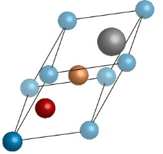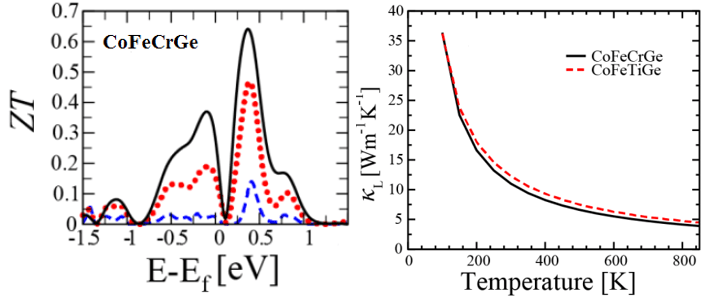Theoretical Investigations of the Electronic, Magnetic, and Thermoelectric Properties of Transition-Metal Based Compounds
Student: Raad Haleoot
Degree: Ph.D., December 2019
Major Professors: Dr. Bothina Manasreh, Dr. Omar Manasreh
Research Area(s):
Modeling & Simulation
Nanoscience & Engineering
Background/Relevance
- Thermoelectric (TE) solid state devices are constructed using two dissimilar materials such as p- and n-type semiconductors connected electrically in series and thermally in parallel.
- Thermoelectric devices are used to generate electrical energy from a differential temperature and vice versa.
Innovation
- Discovering new materials to use as TE generators.
- Examining the magnetic material properties for spintronic applications.
Approach
- Investigating Cobalt-based quaternary Heusler alloys and monochalcogenides (InSe) as TE materials.
- Analyzing the structural, electronic, magnetic, thermodynamic and thermoelectric properties of the materials.
- Employing Boltzmann transport theory to study the thermoelectric properties, which includes the electrical conductivity, electronic thermal conductivity and Seebeck coefficient.
- Using phonon spectra to obtain the lattice thermal conductivity.

Key Results
- Cobalt-based quaternary Heusler alloys exhibit half-metallic behavior, high magnetizations, good TE efficiency.
- Figure of merit of InSe semiconductor is increased by doping.

Conclusions
- The CoFeCrGe, CoFeTiGe, and CoFeCuGe quaternary Heusler alloys are good candidate materials for TE generators at room and high temperatures and in spintronic devices due to their high thermoelectric power factors, low lattice thermal conductivity, and 100% electron spin polarization.
- Doping InSe semiconductor could enhance the TE efficiency and lower the lattice thermal conductivity.
Future Work
-
Calculating electronic, thermodynamic, and thermoelectric properties for Half-Heusler alloys.
